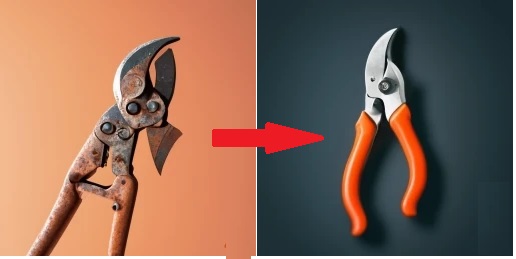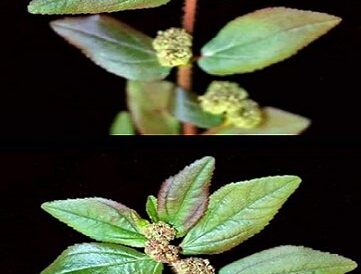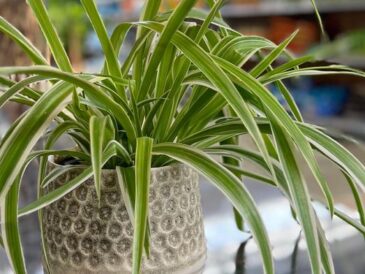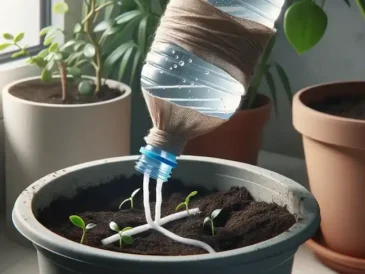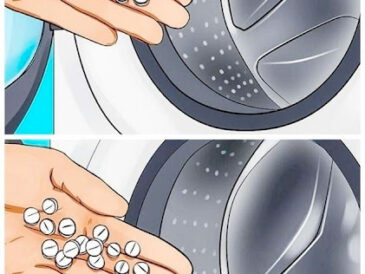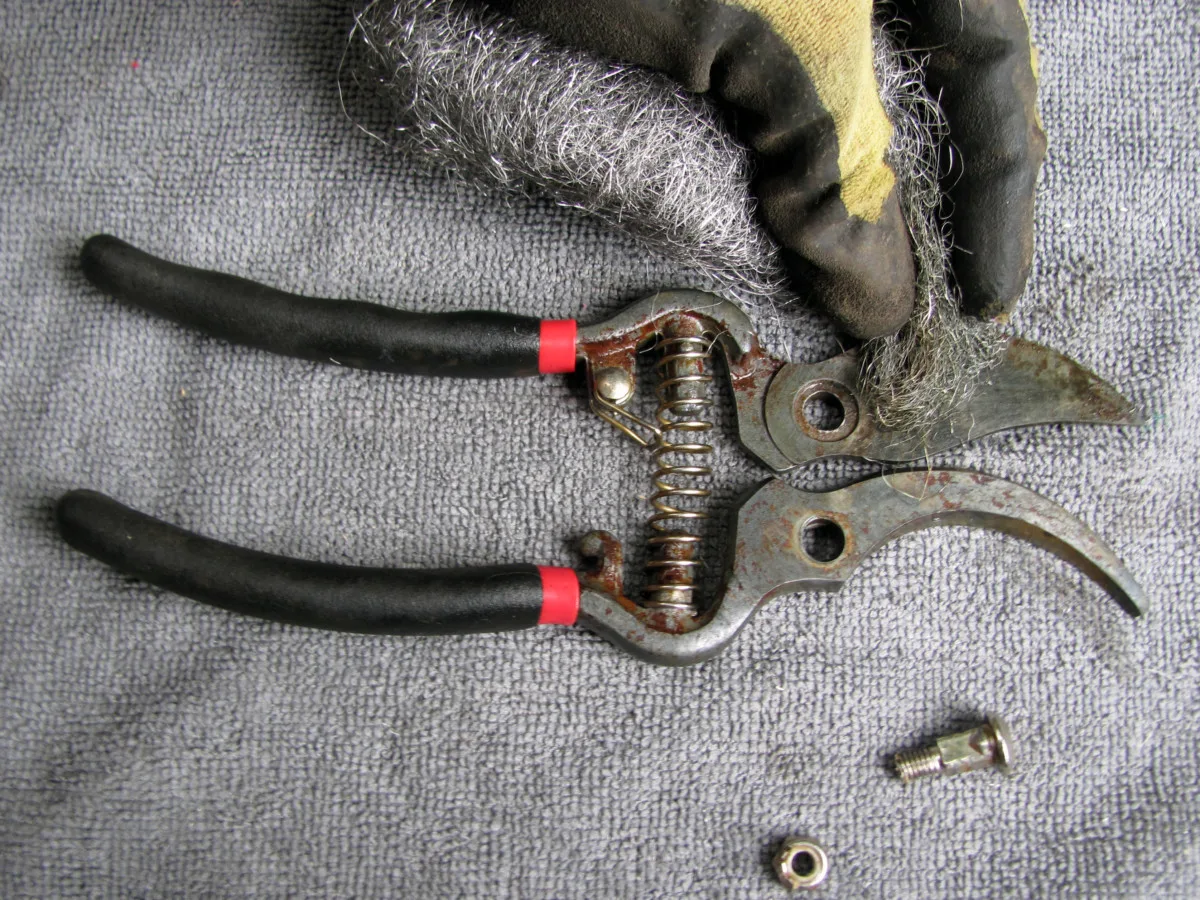
Once the pruners are rust-free, we’ll need to neutralize the acidity of the vinegar by plunking the clippers into a jar with filled with water and 2 tablespoons of baking soda.

Leave them in there for about 10 minutes. When time’s up, take them out and let the pruners dry completely before proceeding to the next steps.
Sharpening the Shears
When your pruners aren’t so rusty, you can skip the vinegar dip and clean the blade and mechanism with soapy water. Scrub with a toothbrush to remove dirt, sap, and plant debris from all the nooks and crannies, and then wipe it down with a clean rag. Use steel wool to clear away light rust.
To get your pruners snipping smoothly again, you’ll need to use a sharpening tool along the beveled edge of the blade. In bypass pruners, you only need to sharpen the upper blade.
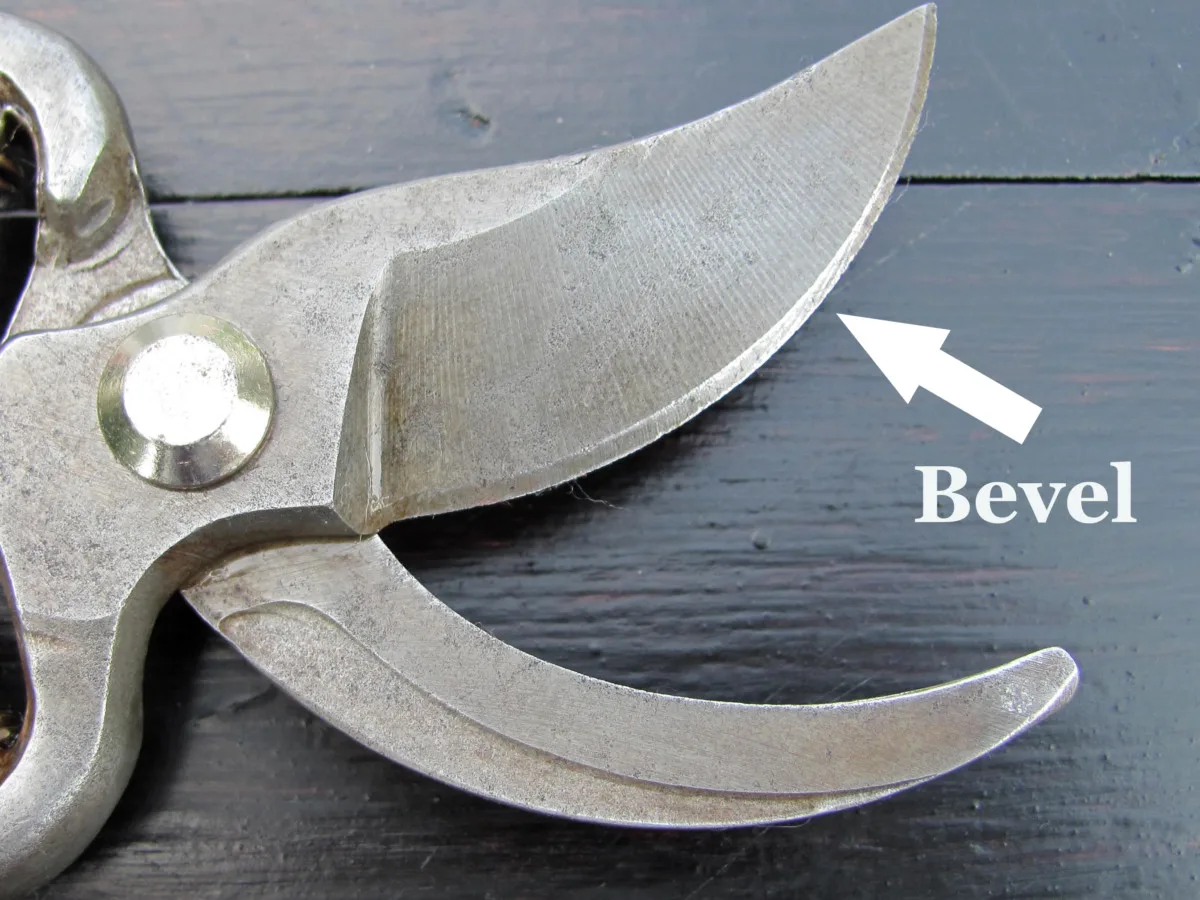
I used a carbide tool because it’s so simple to use, but any sharpening stone or diamond file would do the job.
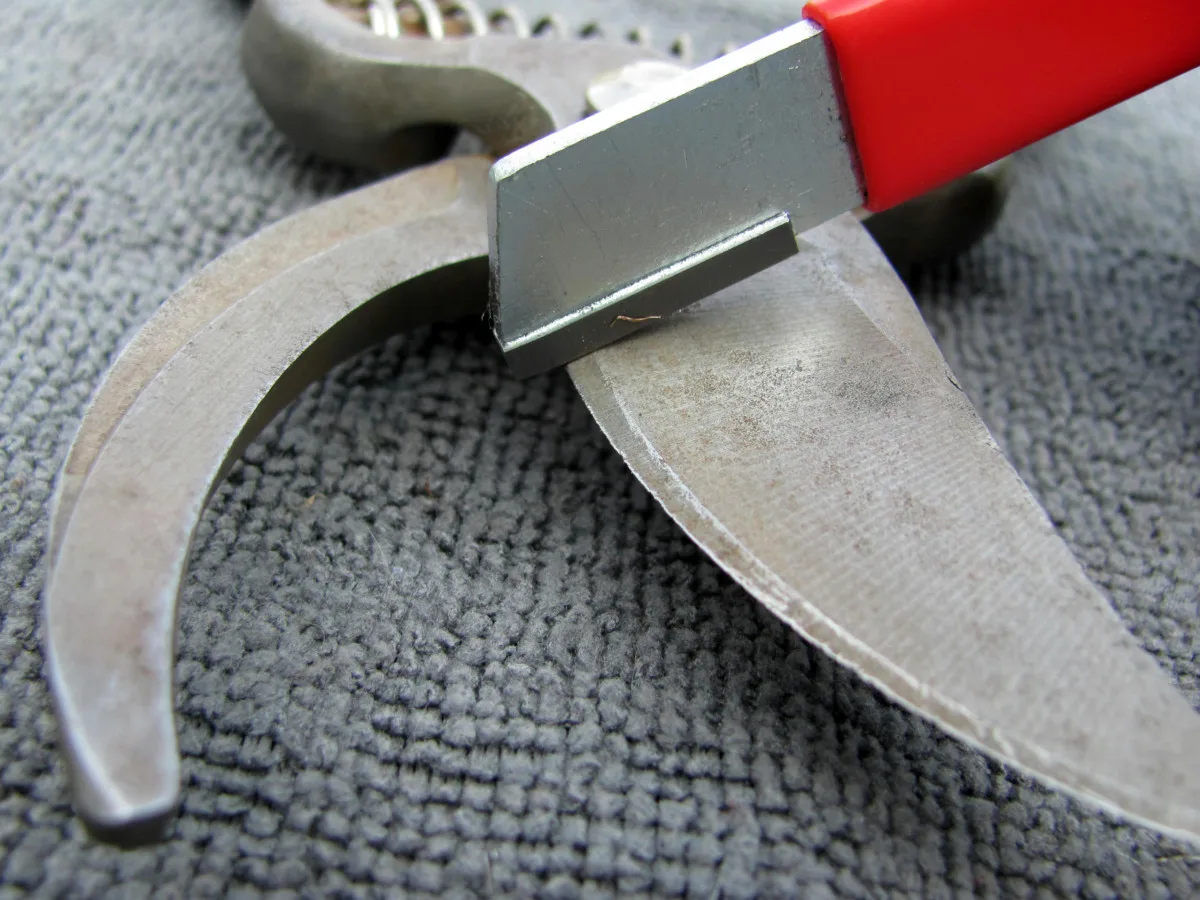
Match the sharpener to the angle of the bevel – around 10 to 20 degrees – and draw it along the edge from the back of the blade to the tip. Do it in one smooth motion with a moderate amount of pressure on the tool.
You only need to do 4 to 5 swipes across the bevel. You’ll feel the burs being removed as you run the sharpener across.
Flip the pruners over and do the other side. This side is flat so run the sharpener flush to the blade. When both sides are smooth to the touch, you’re done honing the edge.
Apply a Coat of Multipurpose Oil
Prevent future rusting and keep the squeeze mechanism moving seamlessly by applying a thin coat of multipurpose oil as the final step.
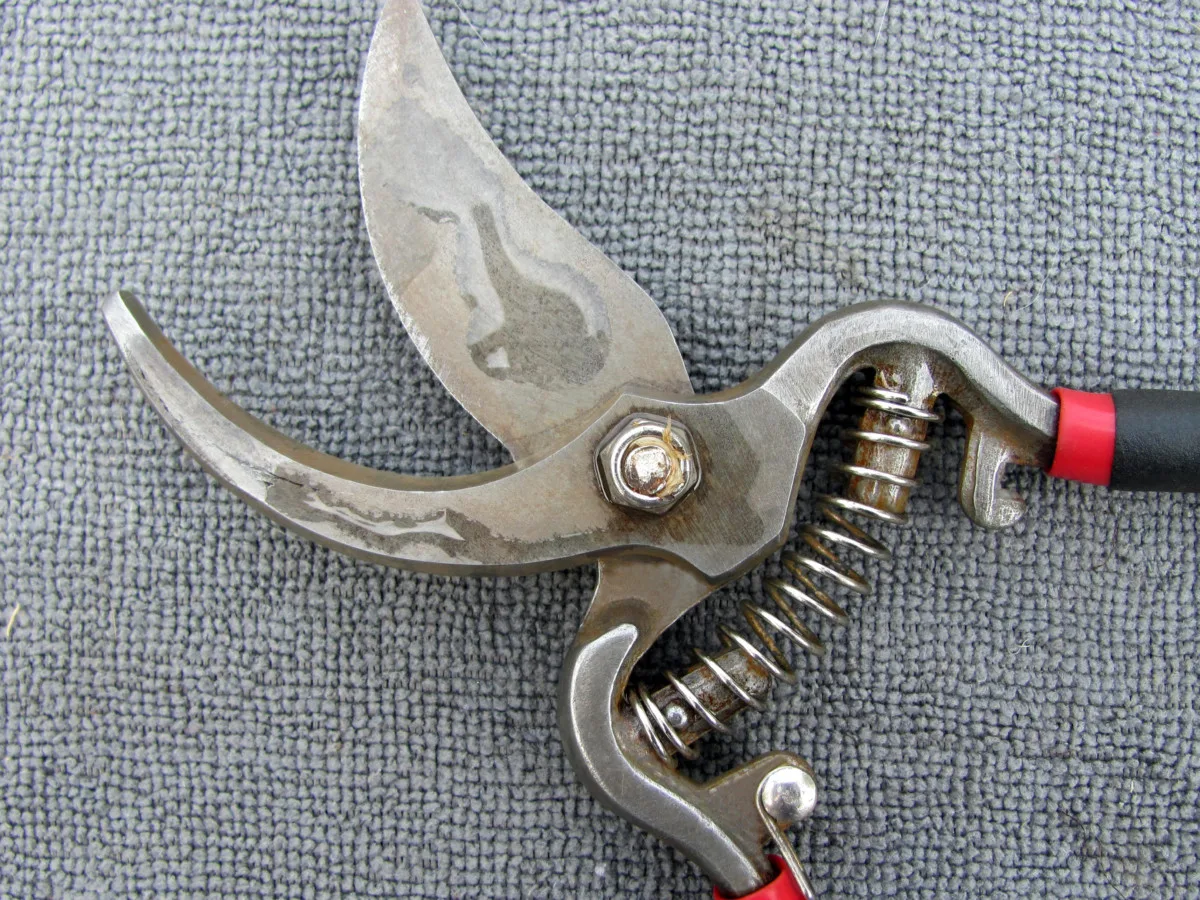
Using a rag, rub the lubricant all over the blades and moving parts. Work the pruners back and forth a few times to disperse oils through the closing mechanism.
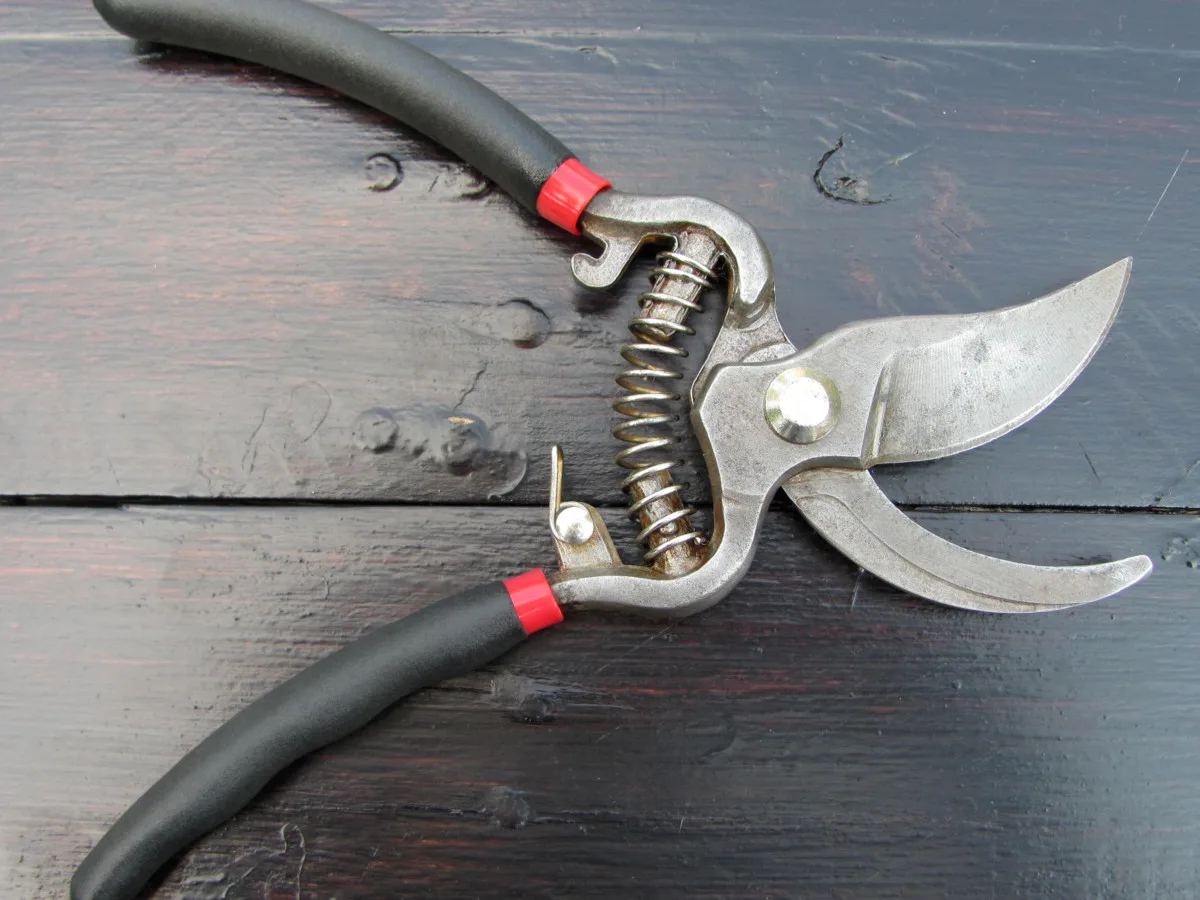
And now for the real test:
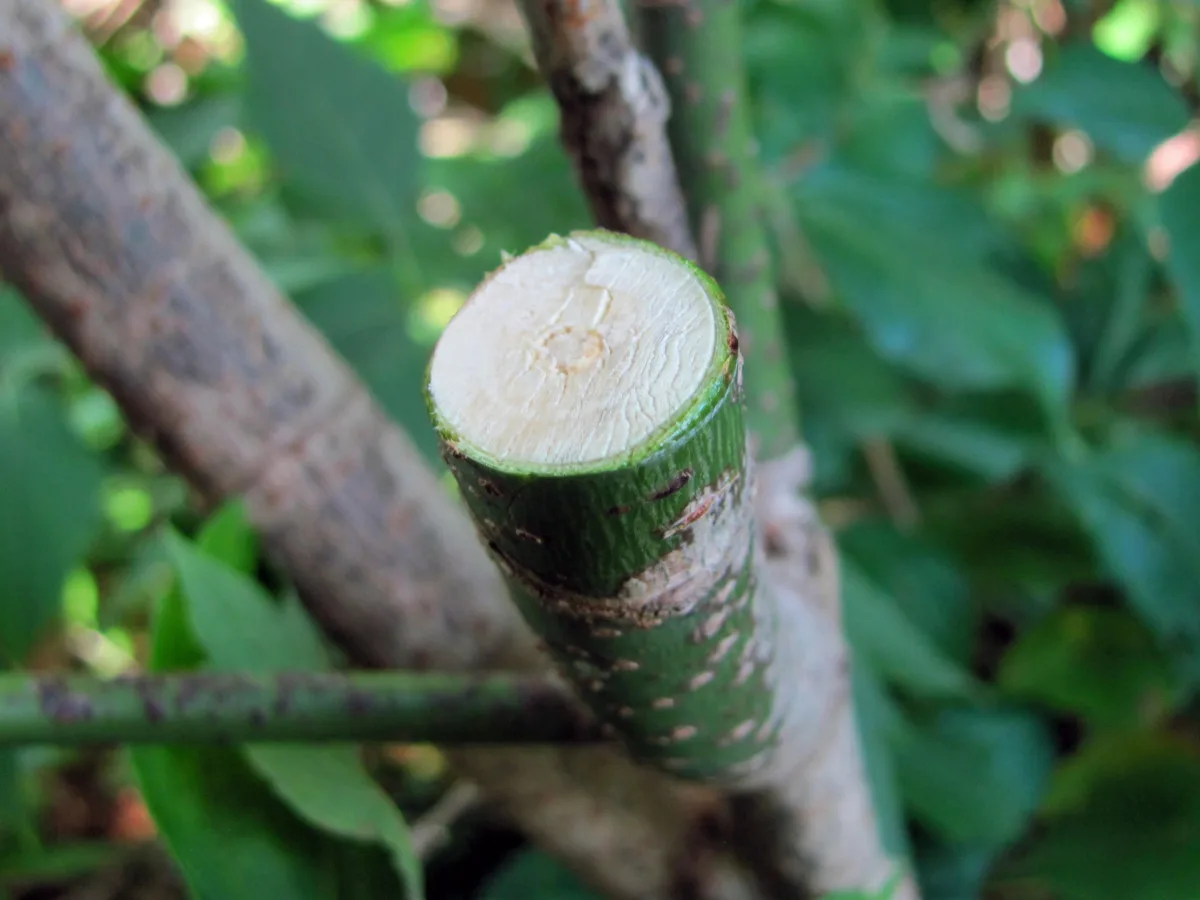
Amazing!
Clean and sharpen your pruning tools in fall before tucking them away for the winter season. Add this task to your autumn to-do list and you’ll hit the ground running every spring.
